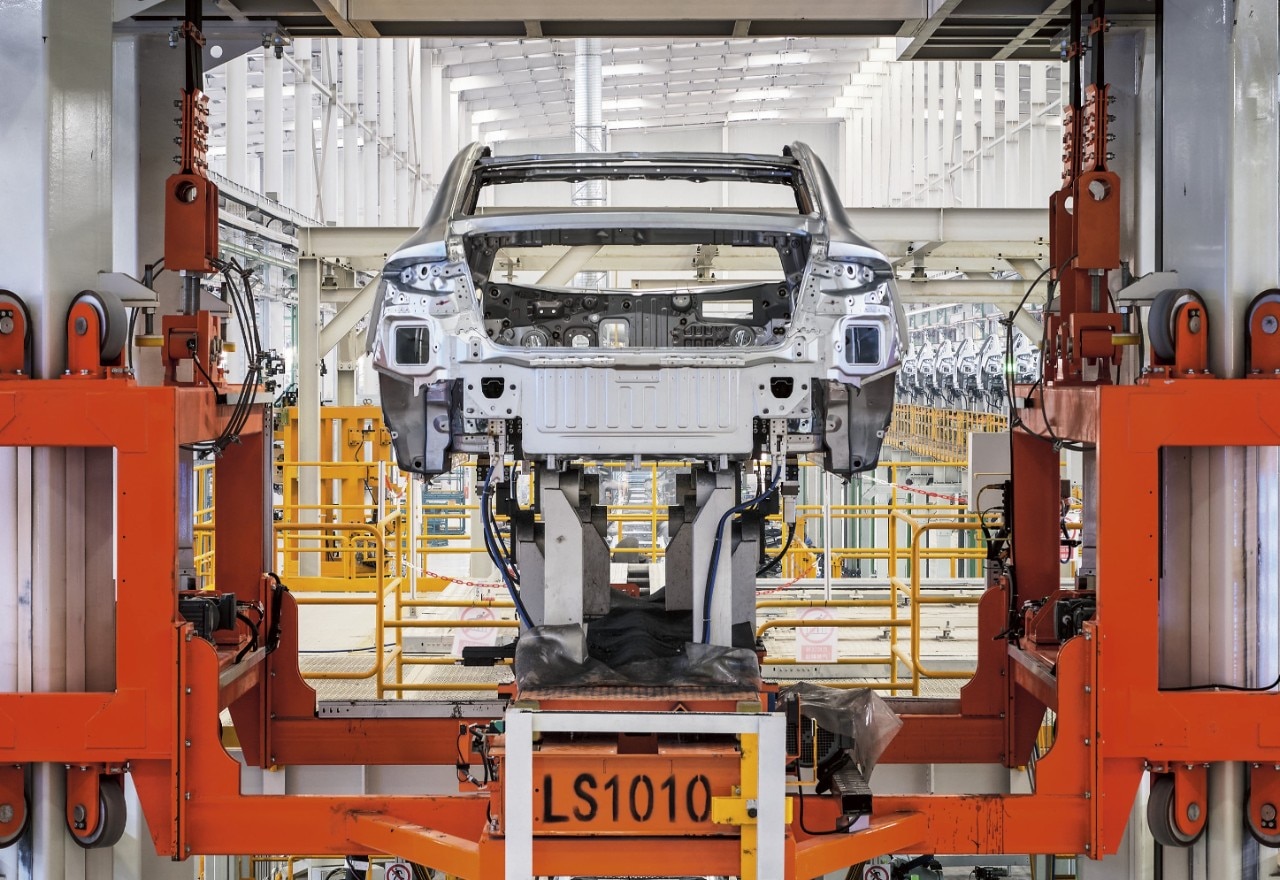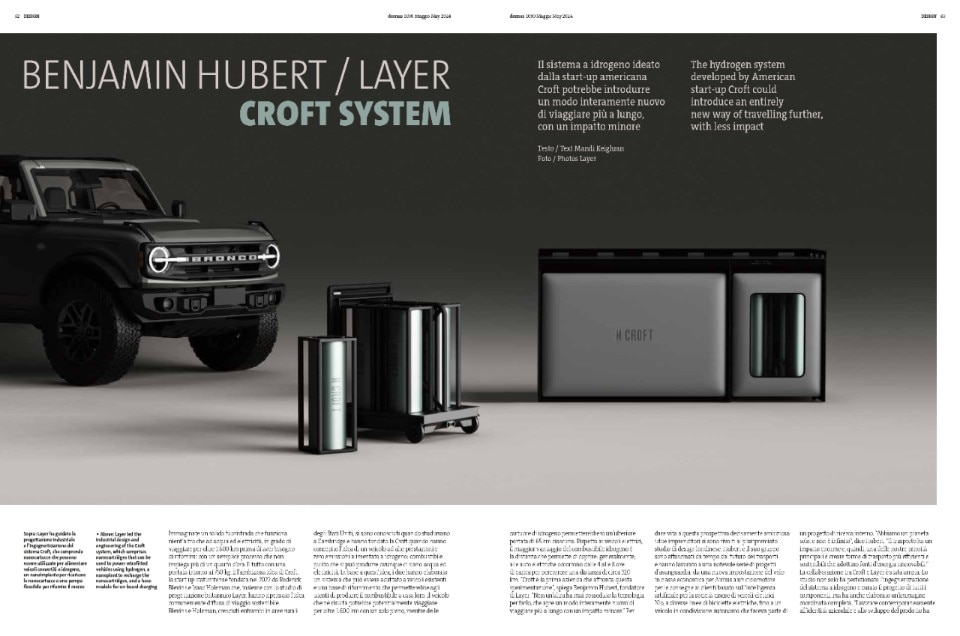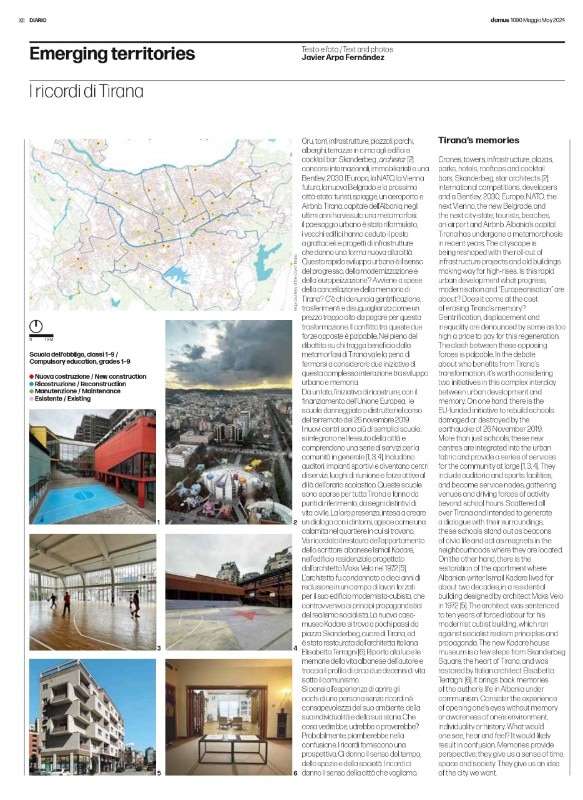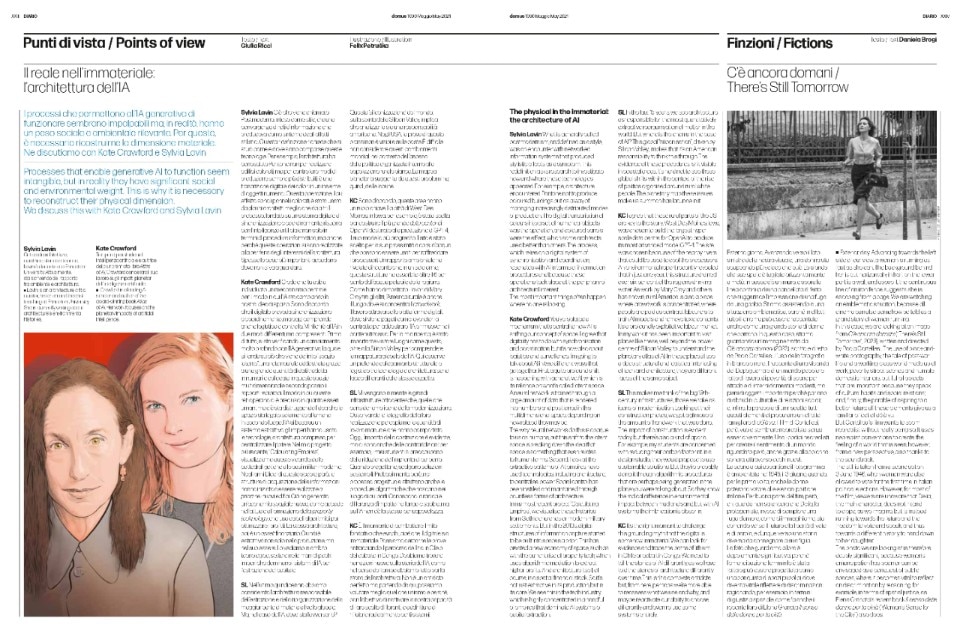Domus 1090 delves into the topic of mobility which intersperses with the early studies on aerodynamics and electric cars and the relationship between transportation and the built environment. “In the 1940s and 1950s of my youth, I was obsessed with the world of motion and speed,” writes Norman Foster in the editorial. Today, the 2024 guest editor continues, cities haven’t changed much, but our society is still strongly dependent on cars and urban expansion, which is reflected in the “high energy consumption and a corresponding carbon footprint.” Therefore, the future of mobility is inextricably linked to the future planning of cities and the infrastructure.
Three essays explore some specific topics, reflecting on how mobility can be designed to make cities more sustainable and equitable. Stephen Bayley investigates the imaginary associated with the automobile and its relationship to humans. An object that once represented dreams and freedom has now become a trigger for our environmental concerns, driving conventional cars into crisis and prompting a search for a new design approach. Thomas Stone addresses the issue of integrated urban and transportation planning − crucial issues at a time in history when urbanization is on the rise worldwide. Focusing on these two aspects means creating effective, progressive, and inclusive policies for urban residents, ensuring accessible mobility for all. Marco te Brömmelstroet and Jonne Silonsaari discuss the issue of the scarcity of urban spaces reserved for children. The authors draw inspiration from a series of case studies being tested today.
The Architecture column collects recently completed projects in China, Canada, the Netherlands and Iran.
Xiangning Li writes about the latest work by MAD Architects, which completed its first mobility-oriented project in the city of Jiaxing. The train station is conceived as an infrastructure that, on one hand, continues a dialogue with the past by restoring the old brick station; on the other, it stiches and weaves together the old with the new, creating new and large green spaces. Leander Kalil delves into the third phase of the Samuel-De Champlain Promenade project in In Québec City, designed by Daoust Lestage Lizotte Stecker architecture. Kalil talks about this stretch of the St. Lawrence riverfront and its industrial past, now converted to a recreational place for the city and its residents. Kirsten Hannema reports about the parking lot for 4,000 bicycles below the water level built by VenhoevenCS Architecture + Urbanism in Amsterdam. This program is complemented by the construction of public areas and spaces for biodiversity. Giulia Ricci presents the intervention by KA Architecture Studio on the Meydan-e Jahad subway station in Tehran. The design presents a series of brick vaults, giving an emphasis to an urban scene featuring strong clashes between government and citizens since the death of Mahsa Amini in 2022. The project, writes Ricci, is part of a larger effort to pedestrianize the Iranian capital. Guanghui Ding describes Daniel Statham Studio's Future Car Park in Hangzhou as an attempt to revolutionize the car park typology. The project includes automated parking systems, public and event spaces, and a rooftop garden.
In the 1940s and 1950s of my youth, I was obsessed with the world of motion and speed.
Norman Foster
Norman Foster's interview with Robin Chase, an American transportation entrepreneur, highlights how the future lies in more sustainable compact cities, where we will get around not in SUVs but with more appropriately sized and fuel-efficient vehicles.
In the Design section, Alessandro Benetti presents Luvly O, an all-electric minicar whose technological infrastructure and development kits have been patented by the Swedish company Luvly. A minicar that aims to be commercialized on a global scale, it “offers its customers ethical rather than aesthetic pleasure.” Mandi Keighran talks about the Croft hydrogen system. This system, the result of a collaboration between American start-up Croft and Benjamin Hubert's Layer design studio, could improve the way we travel, providing a greater distance range and less impact on the environment.
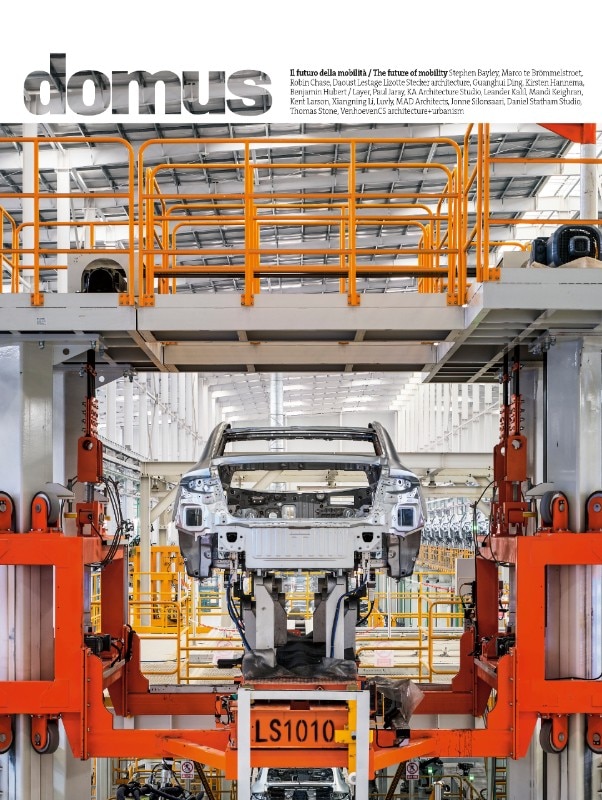
In Archive, Matthew Foreman writes about the rediscovery of a pioneer in aerodynamics, Viennese engineer Paul Jaray. For Foster on art, the British architect chose the Citroën DS, a historic and iconic car that remained in production from 1955 to 1975. In Book reviews, Luca Galofaro reviews three books − by Henry Grabar, Thalia Verkande and Marco te Brömmelstroet, and Ben Goldfarb − that deal with the relationship between ecology and mobility. In Postscript, Foster gives us his interpretation of infrastructure as an urban glue.
Norman Foster’s interview with Kent Larson, director of City Science at the MIT Media Lab, focuses on the balance between technological solutions and public policies as the key to achieving sustainable mobility. In the Cover story, Canadian photographer Edward Burtynsky narrates the cover shot, featuring the BYD plant in the Changzhou National High Technology District, a major manufacturing facility in eastern China.
In Diario, Davide Vargas talks about the second edition of Interaction Napoli, a Neapolitan public art event organized by Made in Cloister Foundation. In Emerging territories, Javier Arpa writes about the recent urban transformation of Tirana, while in Events he talks about the Contemporary Art Bienniale 2024 in Diriyah, Saudi Arabia. In Human design, Paola Carimati delves into Giulia Foscari’s research, founder of Una/Unless, for Criosfera (Cryophere), her lamp made for Artemide. In Graphics, Francesco Franchi presents Bruno Munari’s open method on the occasion of the exhibition “Bruno Munari. Tutto” at the Fondazione Magnani Rocca (Parma, until June 30th). In Mnemosine, Cristina Moro introduces the creative partnership at the root of the new brand Tamart, launched at MDW, which puts into production objects designed in the second half of the 20th century by Tamar de Shalit and Arthur Goldreich. In Points of view, Giulia Ricci discusses with Sylvia Lavin, critic, historian, and theorist teaching at Princeton University, and Kate Crawford, scholar and international expert on artificial intelligence. The conversation focuses on the need to reconstruct the physical dimension of AI, which, despite its apparent intangibility, has great impacts in architectural, social, and environmental terms.


